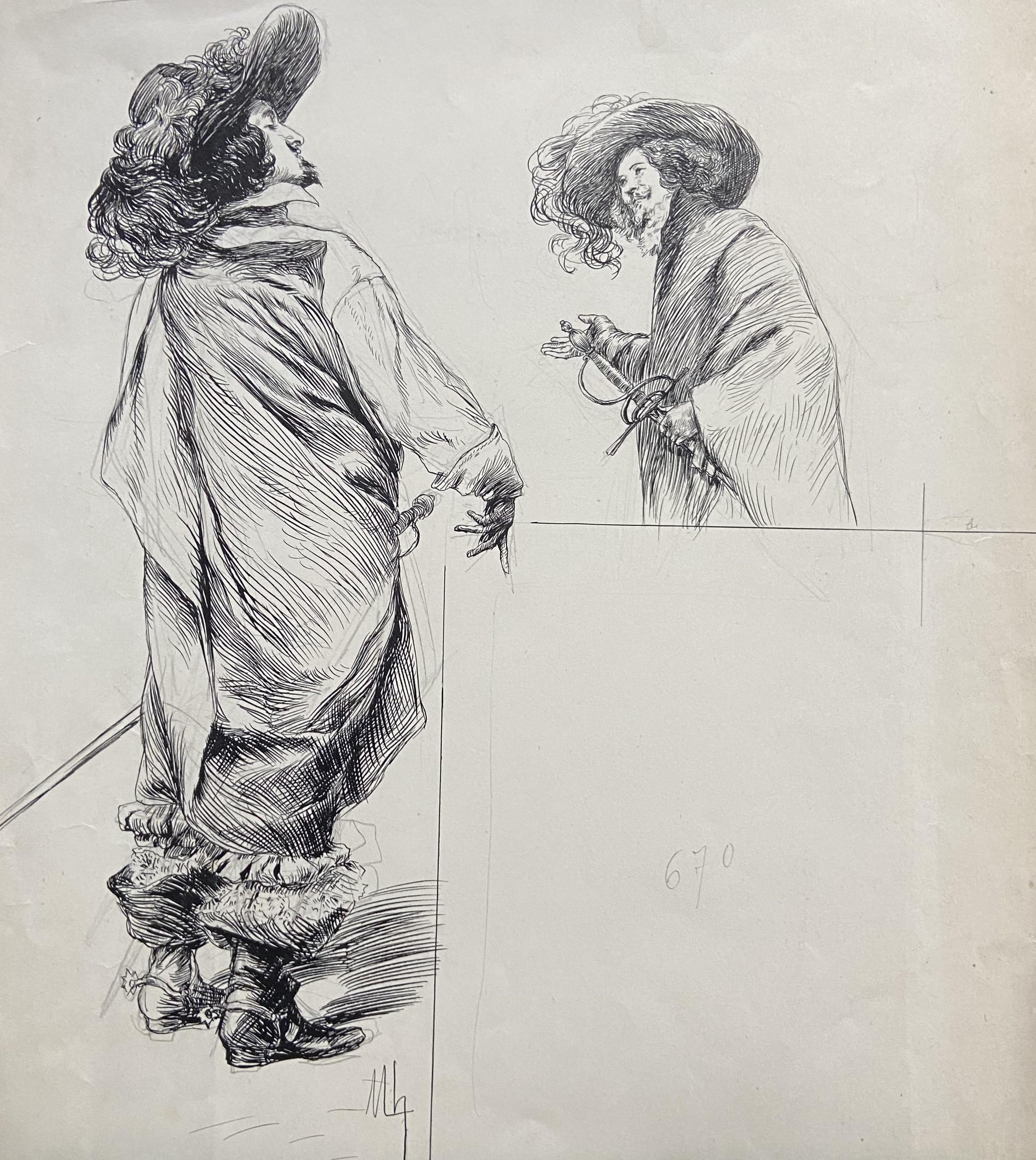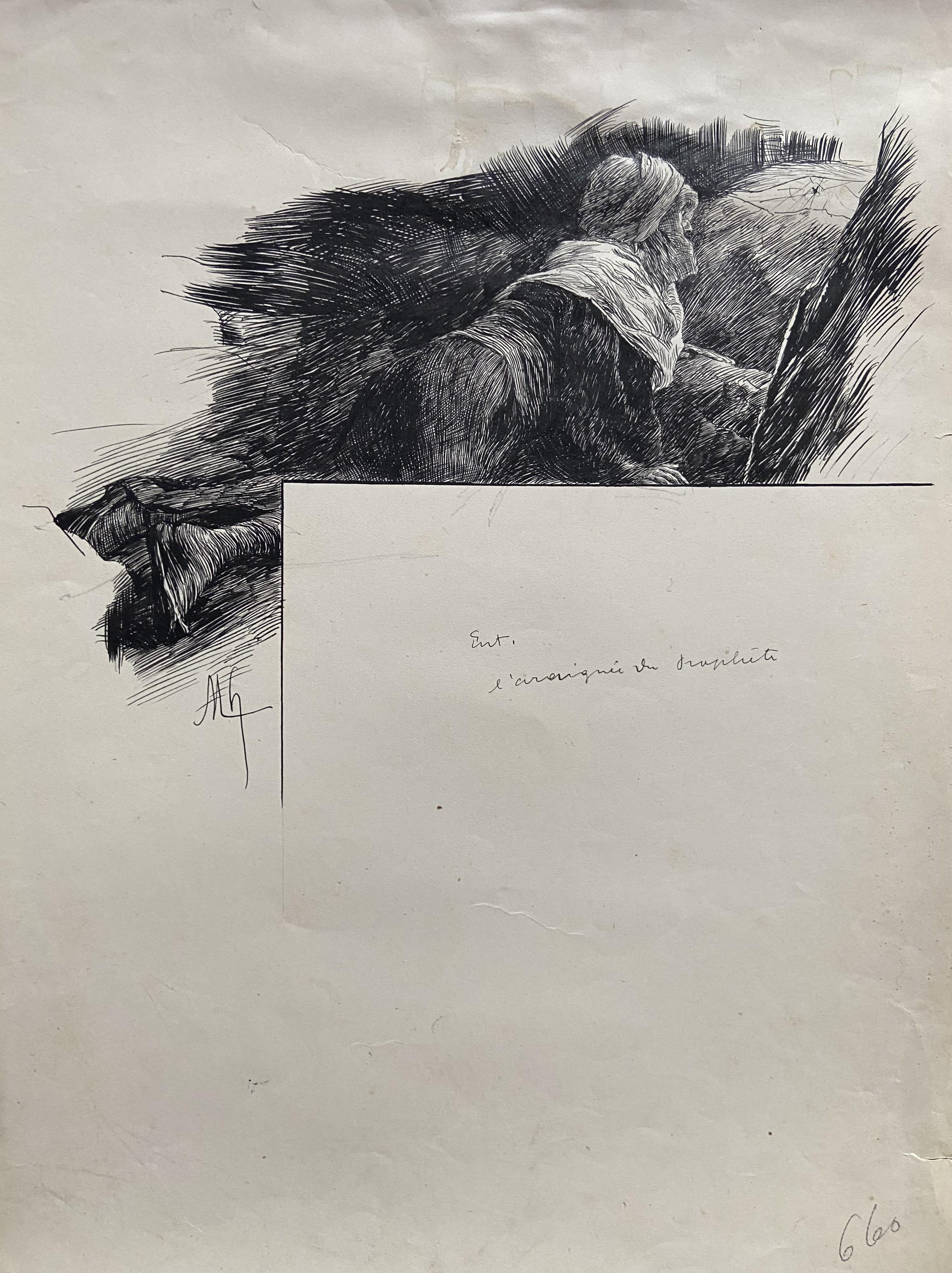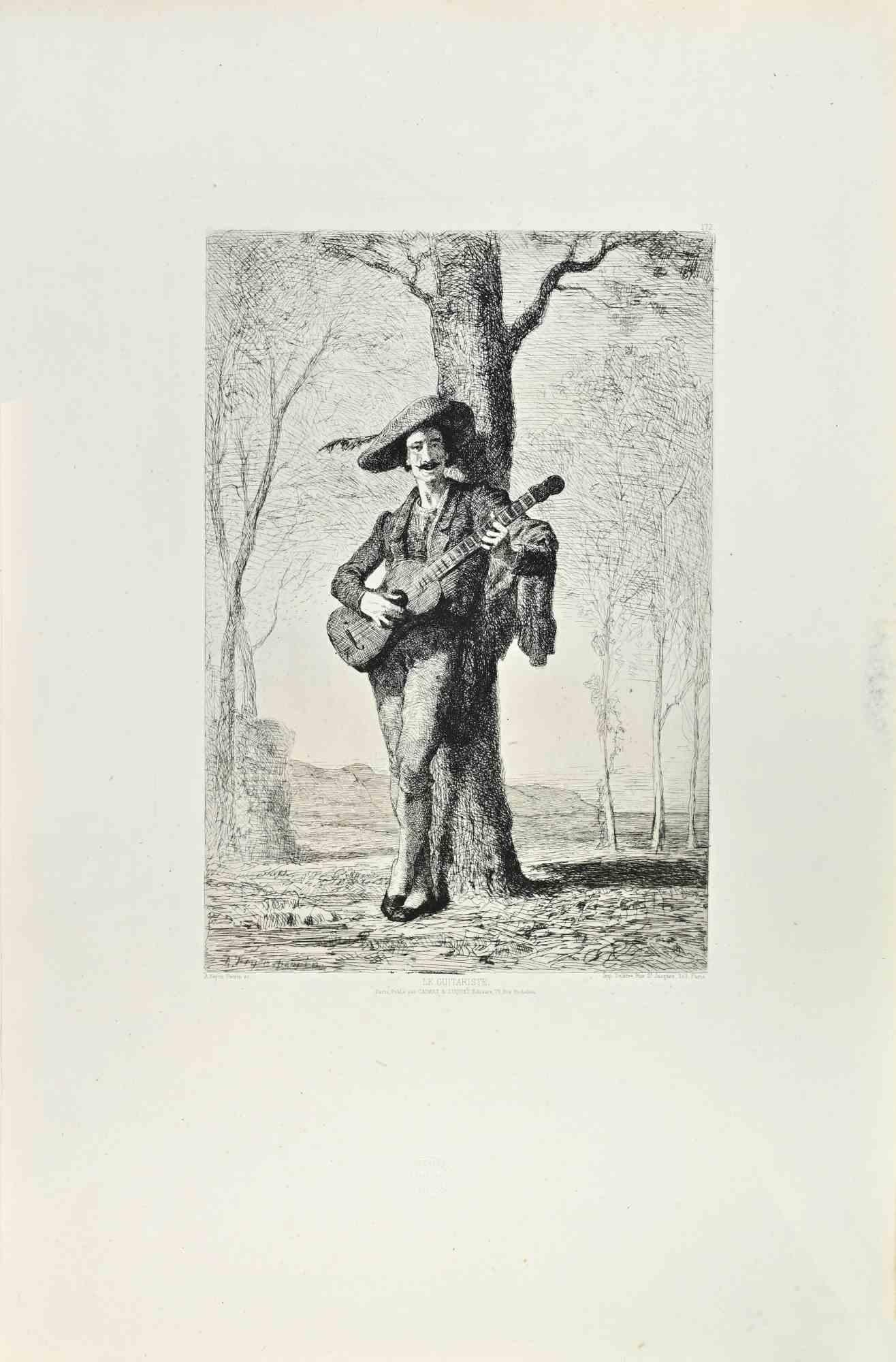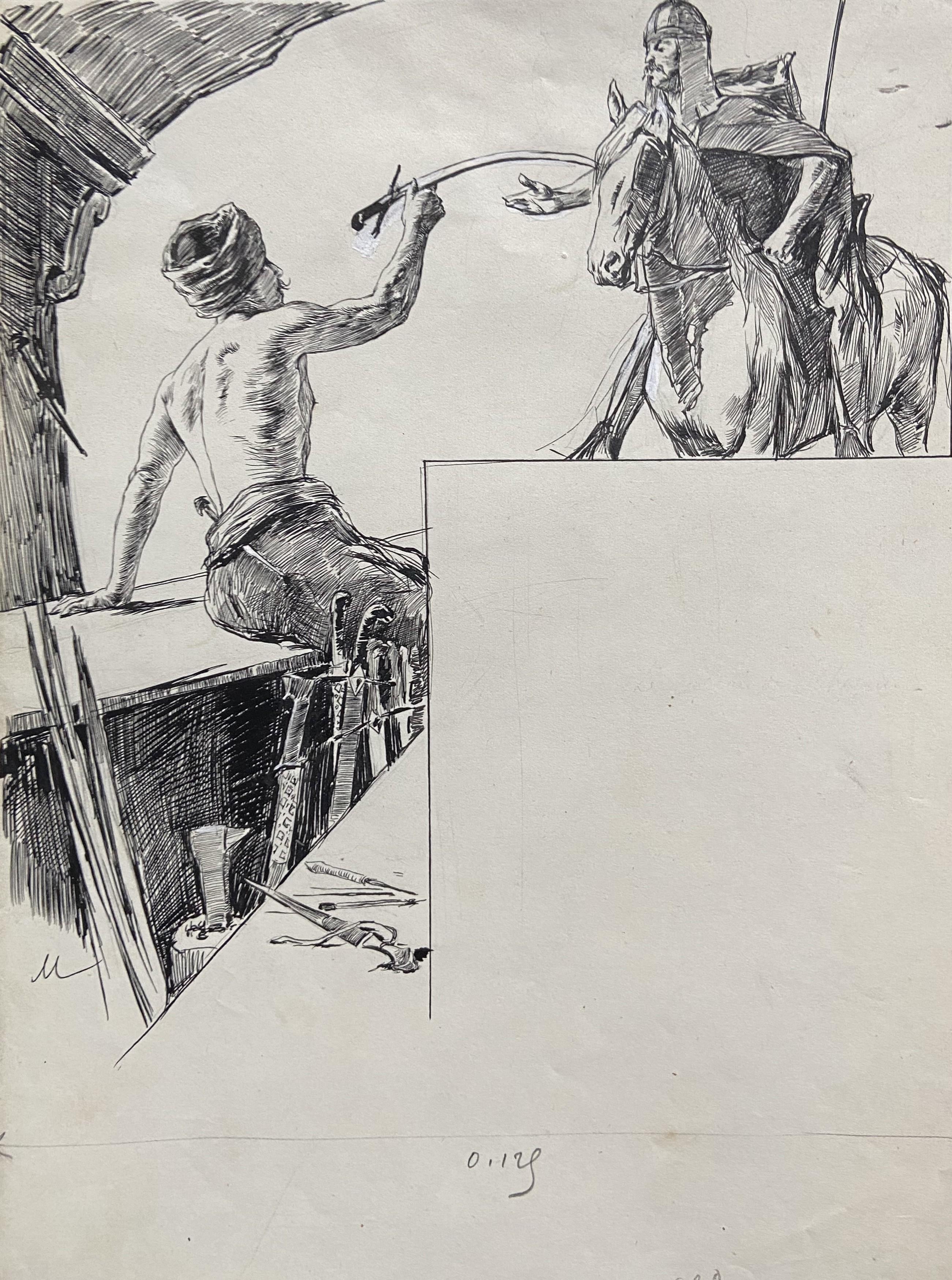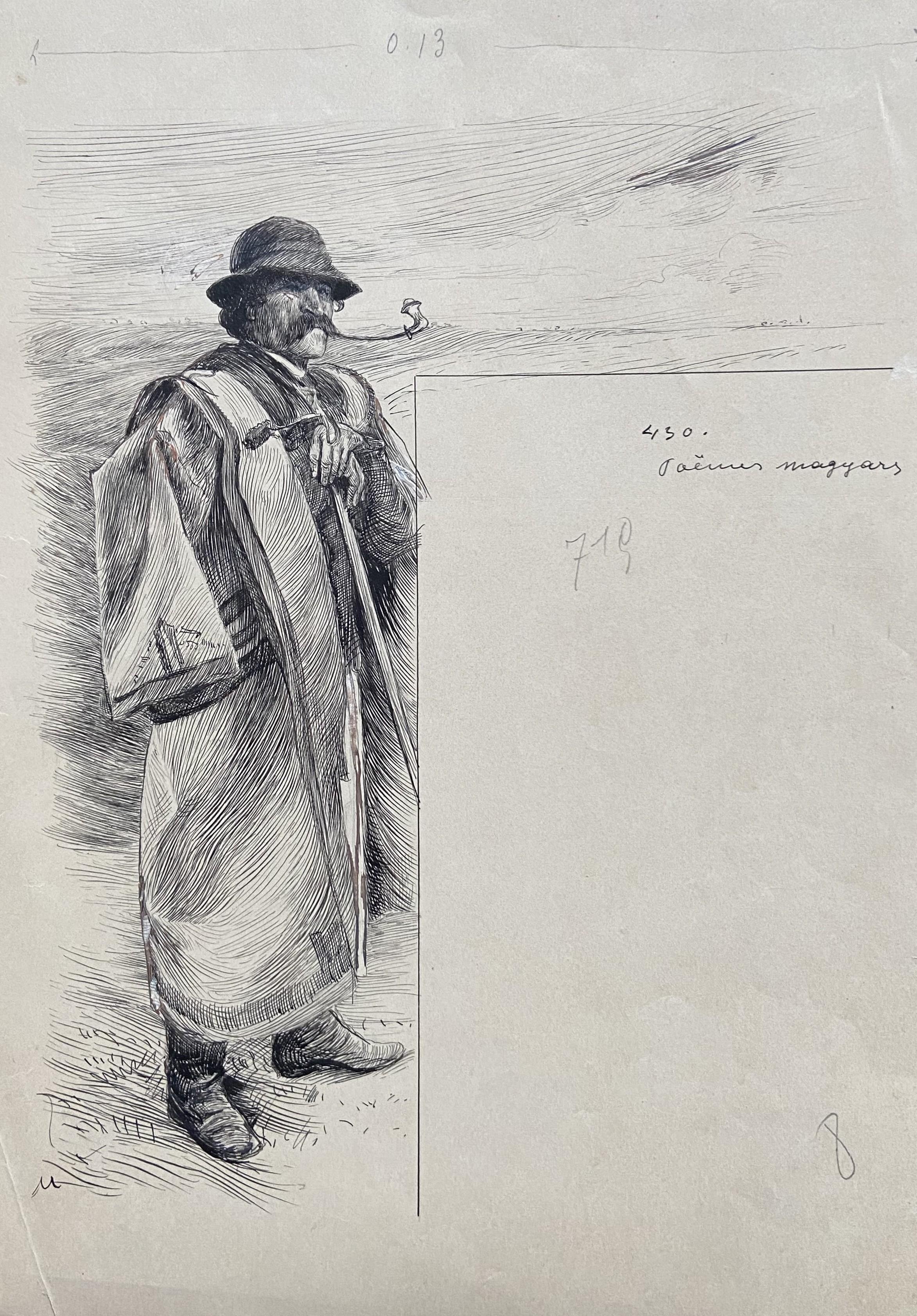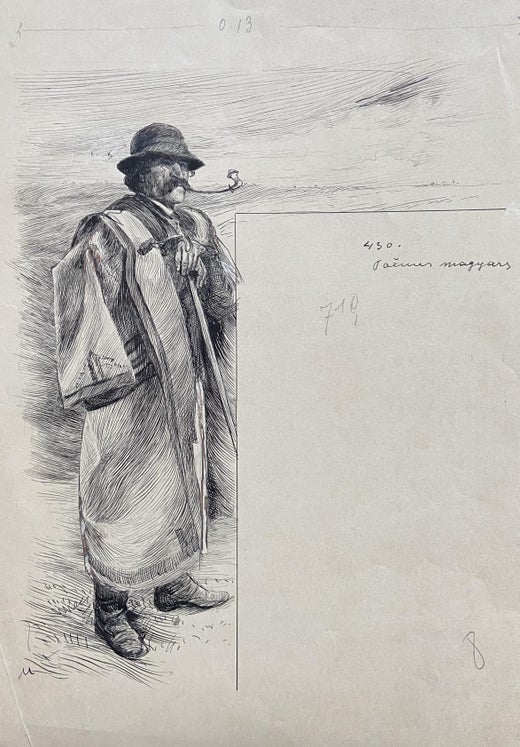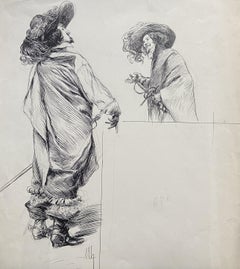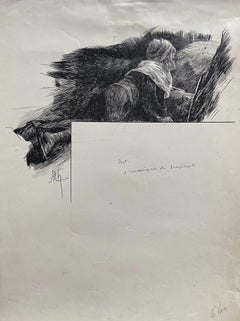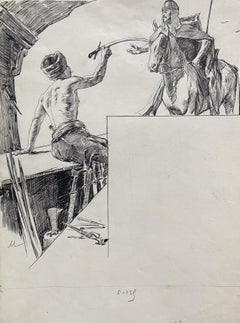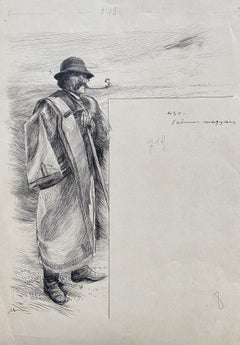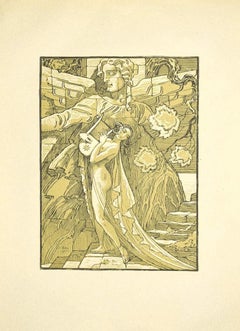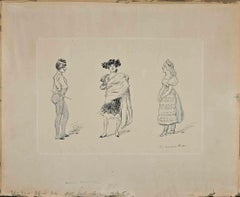Felician MyrbachFelician Myrbach (1853-1940) Pour Guitare solo, original drawingcirca 1895
circa 1895
About the Item
- Creator:Felician Myrbach (1853 - 1940)
- Creation Year:circa 1895
- Dimensions:Height: 11.74 in (29.8 cm)Width: 7.41 in (18.8 cm)
- Medium:
- Movement & Style:
- Period:
- Condition:
- Gallery Location:Paris, FR
- Reference Number:Seller: Inv 53211stDibs: LU1112212329432
Felician Myrbach
Felician Myrbach was born on February 19th, 1853, in Zalishchyky. He was an Austrian painter, graphic designer and illustrator. He was a founding member of the Vienna Secession and the director of the University of Applied Arts Vienna and was instrumental in the creation of the Wiener Werkstätte. Myrbach's father was Franz Myrbach, the Administrator of Bukovina in 1865–70. His older brother Franz Xaver was an economist and professor at the University of Innsbruck. Myrbach attended the Theresian Military Academy in 1868–71, graduating as a Lieutenant, then at the Academy of Fine Arts, Vienna under August Eisenmenger. In 1875, he joined the 19th Feldjäger Battalion, and in 1877 became an Oberleutnant in the Military Geographic Institute, then, after campaigning in Bosnia in 1878, he taught drawing at the Infantry Cadet School in Vienna. He continued his artistic studies under C R Huber. In 1881, Myrbach went on military leave and moved to Paris, retiring totally from the military in 1884 as a Hauptmann, 2nd Class. He stayed in Paris until 1897, working as an illustrator, including illustrating the works of Alphonse Daudet, Victor Hugo and Jules Verne. Myrbach was a founding member of the Vienna Secession in 1897. In the same year, he became a professor of the Applied Arts School at the Museum of Art and Industry; Arthur von Scala, another reformer Modernist, was made head of the Museum. In 1889, Myrbach became the director of the school. He brought an enthusiastic Modernist attitude and encouraged integration between art, design and production. He added Koloman Moser and Josef Hoffmann to the staff, amongst other Secession artists. This had lead to the foundation of the Wiener Werkstätte in 1903. Myrbach leaned more towards an aesthetic approach than von Scala, but both worked together to bring about their combined vision of successful, popular Austrian applied art. Myrbach was a voice for reform towards Modernist ideals in the School, which was started in 1899 with the support of Alfred Roller, and completed by 1901. The reform of the school has been described as his "lasting merit". Ludwig Hevesi called Myrbach "probably the best (illustrator) in Vienna", partially for his work (with Moser) in the Secession magazine Ver Sacrum. Myrbach visited America on a state-funded study trip in 1904, part of which was to represent the Applied Arts School at the 1904 World's Fair in St Louis; from California, he submitted his resignation to the school due to ill health. He moved abroad in 1905, first returning to Paris and providing illustrations for Hachette, and then from 1914 living in Spain, mainly in Barcelona but also spent time in Bilbao. He returned to Austria in 1936. Myrbach created many scenes of military life, as well as bucolic pictures of farmers, horses and forests; as well, his work showed touches of Orientalism. Until 1898, he employed algraphy in his work; he painted in oil, watercolor and tempera. Myrbach passed away on January 14th, 1940.
- ShippingRetrieving quote...Shipping from: Paris, France
- Return Policy
More From This Seller
View All1890s Art Nouveau Figurative Drawings and Watercolors
Ink
1890s Art Nouveau Figurative Drawings and Watercolors
Ink
1890s Art Nouveau Figurative Drawings and Watercolors
Ink
Early 1900s Art Nouveau Figurative Drawings and Watercolors
Ink
Early 1900s Art Nouveau Figurative Drawings and Watercolors
Charcoal, Chalk
1890s Academic Portrait Drawings and Watercolors
Carbon Pencil
You May Also Like
1870s Modern Figurative Prints
Etching
1870s Impressionist Portrait Prints
Etching
1920s Art Nouveau Figurative Prints
Lithograph
19th Century Art Nouveau Figurative Prints
Paper, Pencil
1860s Modern Figurative Prints
Etching
Late 19th Century Modern Figurative Drawings and Watercolors
Paper
